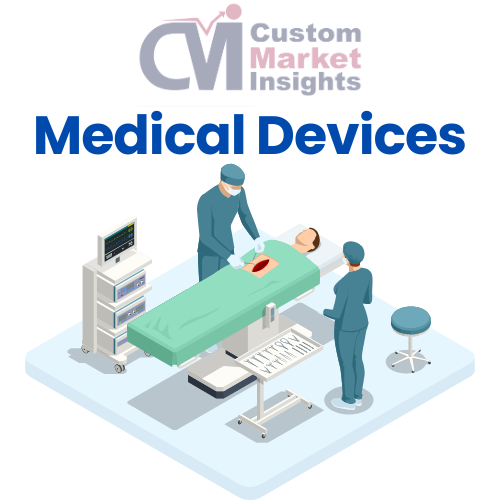Medical devices are important tools in healthcare, used for treating, detecting, or keeping track of medical conditions. Introducing new technology and treatments most economically gives this field an extraordinary look. Over the years, this industry has grown fast globally because of new technologies, more older adults, and higher demand from developing countries. If we follow the market research reports, we will witness improvement in telemedicine, the health sector, artificial intelligence, monitoring devices, and more in the upcoming time.
- Industry Consolidation
Out of hundreds of medical device companies globally, the top 15 make almost half the money in the market. The industry is said to be more persistent in the coming years, as suggested in a report by Kalorama Information.
- Shifting Regulatory Landscape
According to a recent report by CMI, ensuring the quality of medical devices involves two main stages:
- Before they hit the market, they need to get regulatory approval.
- And another after they’re on the market to make sure they’re safe and effective for people to use.
Detecting these quality control stages is critical for a medical device’s success as the regulations are constantly changed and new standards are introduced. Keeping track of these devices and updating them on time becomes important to keep approval of selling them on the market.
- Increasing Use of Robotic Surgeries
A report by CMI shows that the market for worldwide surgical robots will increase to $18.9 billion by 2027. This growth, at a rate of 16.9% annually, is directed by the increasing popularity of less invasive surgeries. These procedures offer numerous benefits, such as smaller cuts, less scarring, reduced pain, quicker recovery, and lower costs. With the rise of robotic technology, surgeries are expected to become more efficient, repeatable, and precise.
- Use of Artificial Intelligence and Machine Learning
As technologies like these continue to grow, the healthcare market is expected to grow fast in the worldwide artificial intelligence market. The AI in the healthcare market is estimated to be $14.6 billion in 2020. According to a new report by CMI, by 2027, it is shown to reach $120.5 billion, rising at a CAGR of 36.5%. The lead markets are Japan, Canada, Germany, China, and the U.S.
The India AI in Healthcare Market was estimated at USD 10 billion in 2021 and is anticipated to reach around USD 35 billion by 2030, growing at a CAGR of roughly 30% between 2022 and 2030.
- Rising Demand for Remote Patient Monitoring Devices
Remote patient monitoring devices are becoming more and more globally known. In 2022, these devices were worth about $2.4 billion, but by 2030, it is expected to reach a $8.54 billion market value with an annual growth rate of around 18.6%.
The pandemic has changed a lot, and when it comes to the health sector, one can now provide medical assistance for remote patients, too. Remote monitoring devices manage severe conditions like hypertension or diabetes and give real-time reports to the medical staff. Wearables track a patient’s health position, showing blood pressure, heart rate, and any physical activity. Wearable devices help with various settings for nursing homes, patients at home, and hospital wards.
During the COVID-19 pandemic, the use of remote patient monitoring took off. More people started using telehealth services because it was safer and more convenient. Reports explain that telehealth solutions have shown the power to elevate health imprints and reduce costs.
Plus, insurance companies have started covering these services more, making them easier to access for patients. So, it’s not surprising that the market for remote patient monitoring devices is expected to keep growing fast.
- Growth of 3D Printing for Medical Devices
3D printing is becoming increasingly popular in medicine because it allows innovative solutions. It’s used for various purposes like creating physical models for surgical planning, training, and making orthotics and prosthetics. According to CMI, the market for 3D printing in medical devices was valued at $1.9 billion in 2022. Global Industry Analysts predict that by 2030 this market will grow significantly to reach $5.11 billion. This growth is expected to happen at around 17.8% annually until 2030.
- Increasing Importance of Cybersecurity
With increasing patient data being stored and transmitted electronically, healthcare providers face growing security risks. The last growing trend is the importance and want for healthcare cybersecurity. With growing numbers of patient data being saved and transferred electronically, medical professionals have faced many security risks. Cyberattacks can put a risk for patient data exposure, destroy the medical provider’s reputation, and disturb healthcare services.
Wrapping up
The number of hacking incidents in North America jumped 42.5% in 2020 as cybercriminals exploited medical data for a long period, which caused trouble in the healthcare systems.
To prevent these nightmare security hacks, healthcare providers are investing in cybersecurity measures to secure and promote the rise of the healthcare cybersecurity market. In 2020, the healthcare cybersecurity market had an estimated value of $9.7 billion, and by 2026, it is projected to reach $25.5 billion, increasing at a CAGR of 17.3%.

